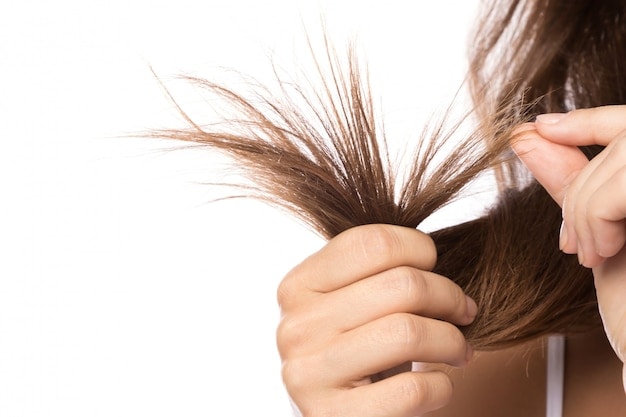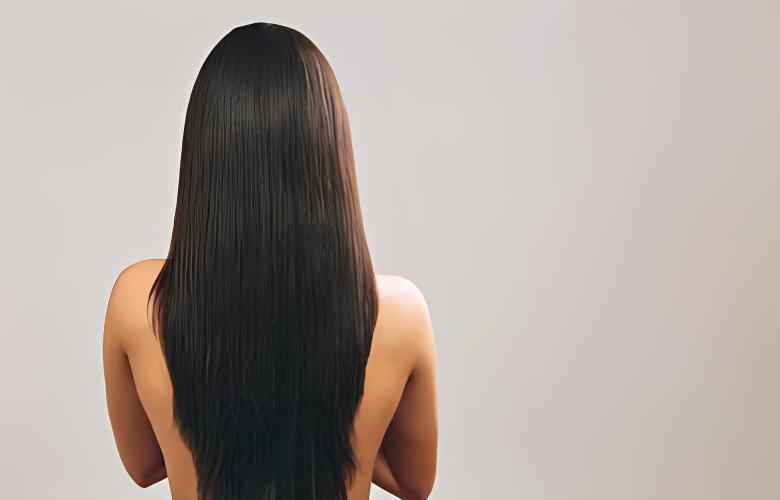Hair is a natural part of our appearance and it can be a source of pride. But as much as we love our hair, it does need to be taken care of. Whether you have short or long hair, it needs to be trimmed on a regular basis.
In order to keep your hair healthy How Often Should You Trim Your Hair. This will not only look better but will also help your hair grow faster.
Although the myth that cutting your hair more frequently makes it grow faster has been disproved, it is still important to trim your hair regularly to maintain its health and condition as well as to ensure it looks its best. So how often should you trim your hair?
How fast does hair grow?
How often you cut your hair depends on how quickly it grows and the style you want to maintain. Hair grows at different rates for every person. However, as a general rule, it grows at the rate of around a half-inch every month, totaling six inches a year.
This can vary based on things like hormones, supplements, and certain medical conditions. And guess what? Seasons also play a part! Warmer weather actually stimulates hair follicles, making your hair grow faster. So, if you’re dreaming of longer hair, regular trims and a dusting every now and then are your secret weapons for a healthy, lengthy mane.
Therefore, there is no ideal answer to how often you should trim your hair as the answer depends on how long you want your hair to be, how fast your hair grows and how healthy your hair is.
Contrary to the belief that trimming makes hair grow faster, it doesn’t. Regular trims help prevent breakage, keeping your hair healthy and avoiding brittleness. Even if you’re growing your hair, you should still get occasional trims, spacing them out a bit.
Visiting the salon every eight to twelve weeks, or two to three months, helps maintain growth and prevent split ends. While cutting your hair doesn’t speed up growth, it eliminates damage, allowing your hair to grow longer.
Why do we need to trim hair?
Some people may ask why hair needs to be trimmed at all, especially if they intend to grow their hair. However, there are benefits to ensuring that even long hair is regularly trimmed.
If the hair is not given frequent trims, eventually, the ends will become broken and damaged. Split ends will spread up the hair shaft causing hair to look frizzy, to be unmanageable, and to be prone to breakage and further damage.
How often should you trim your hair?
Not sure when to schedule your next haircut? While your stylist knows your hair best, but if you didn’t set up your next appointment during the last time you were at the salon, here’s a good guideline to follow according to length:

If you have short hair:
Short hair demands more regular trims, typically once a month. This is crucial to preserve the specific shape of short hairstyles and ensures that styling remains effortless. Without consistent trims, short hair may lose its intended structure and become more challenging to manage.
If you have medium-length hair:
Medium-length hair offers a bit more flexibility when it comes to the time between trims. With less noticeable changes in appearance as it grows, you can extend the intervals to approximately six to eight weeks.
This timeframe allows for the maintenance of overall length, with the option to schedule occasional touch-ups for bangs or face-framing sections.

If you have long hair:
Long hair shares a similar trim frequency with medium-length hair. A general rule is to schedule a trim every six to eight weeks to maintain the overall health and shape of long locks. However, specific attention may be needed for areas like bangs or layers around the face in between these regular trims.
If you have bangs:
Trimming bangs is a more subjective matter. The frequency depends on personal preference and the style of the bangs. Generally, you should reshape them whenever you feel they need a refresh.

Keep in mind that certain bang styles, like super-short baby bangs, may require more frequent trims compared to styles such as curtain bangs, which tend to grow out gracefully.
If you have curly hair:
Philip B(renowned as Hollywood’s leading haircare specialist) suggests that if you have curly hair, you can wait a bit longer between haircuts because you have the flexibility to style it in various ways. The ability to style your hair allows you to extend the time between cuts.
Philip notes that there are many types of curls and curl patterns, but the usual reason for getting a haircut is when the definition or pattern of your curls changes and loses its shape.
So, if you notice that your curls are not looking as vibrant as before, it’s probably a sign that it’s time for a trim. Keeping an eye on the shape and definition of your curls is key to knowing when to schedule your next haircut.

Note: If it has been a substantial amount of time since your last trim, you might consider a completely new haircut to revitalize your appearance. Short precision cuts, like pixie cuts or undercuts, demand more frequent maintenance, possibly every two weeks.
On the other hand, longer haircuts, especially those with layers, typically require less frequent upkeep. Understanding the specific needs of your chosen hairstyle can help you determine the ideal trimming schedule for maintaining both style and overall hair health.
How often should you cut your hair if you want to grow it?
Cutting your hair seems like the opposite of what you’d do if you’re trying to grow it super long. But here’s the deal: getting regular trims is crucial to keeping your ends healthy and avoiding breakage. So, if you’re aiming for long, luscious locks, don’t wait too long between trims – just three months, according to Leigh Hardges(stylist at Maxine Salon in Chicago).
Now, if the thought of going to the salon makes you nervous because you’re worried your hairstylist might chop off more than you’d like (why does that always happen, right?), here’s a tip: ask for a hair dusting.
It’s a cool trick where only the split ends get snipped off, and nothing else.
While trimming your hair won’t magically make it grow faster, getting rid of those dead ends can make your hair look thicker and healthier. If you’re all about reaching that maximum length, a dusting is the way to go.
It involves cutting just the tips of damaged hair (about a quarter of an inch) without sacrificing your precious length. Keep in mind, though, that a dusting won’t redefine the lines of your haircut – for that, you’ll need an actual trim.

How often should you trim your hair to avoid split ends?
Dealing with split ends? While the only permanent fix is a haircut, you can manage them and keep your hair looking healthy between salon visits. Here are some tips to help:
- Seal Split Ends:
- While a haircut is the only way to fully get rid of split ends, you can use products like Redken Acidic Bonding Concentrate to act as a “liquid bandaid” for damaged hair.
- This product strengthens weakened hair bonds, reducing future breakage by up to 63% when used with the complete system.
- Hydrate Your Hair:
- Dryness can lead to split ends, so incorporate a hydrating hair mask like Biolage Hydra Source Deep Treatment into your routine.
- This formula is designed for dry hair, providing more manageable, hydrated, and softer-feeling hair while reducing breakage by 70%.
- Strengthen with Protein Treatments:
- For brittle and weakened hair, consider using a protein treatment mask like L’Oréal Professionnel Serie Expert Absolut Repair Resurfacing Golden Masque.
- This cream-to-gel product helps create shinier, softer hair, correct damaged ends, and nourish while reducing frizz and softening hair texture.
- Rethink Your Sleep Habits:
- Your pillowcase material matters. Switching to silk or satin pillowcases can minimize friction, preventing roughing up of hair fibers while you sleep.
- Unlike cotton, silk and satin are less absorbent, which can be beneficial for those concerned about dry hair.
By following these tips and using the right products, you can manage split ends and keep your hair looking healthy until your next salon visit.
How To Trim Long Hair?
Although scissors are more common for trimming long hair, it is also possible to create long hairstyles using body hair trimmers or clippers. Although generally clippers are typically associated with short, practical hairstyles, there are surprisingly versatile hair clippers and can save you a lot of money by getting closer to a hairstyle.
How do you trim your own hair?
Cutting your own hair might seem like a simple idea, but unless you really don’t care how it turns out, it’s usually better to let the professionals handle it. If you can’t go to your stylist right now, try giving your hair some extra care with deep-conditioning and hot oil treatments.
Also, take a break from using heated styling tools for a little while. You can let your hair air-dry or experiment with wet hairstyles while waiting to see your stylist. Taking these steps can keep your hair healthy until you can get a proper trim.
How often to trim dyed or chemically treated hair?
Hair that has been dyed or treated with chemicals will be more fragile than natural hair and will break much more easily. To prevent it from breaking and from the ends becoming excessively damaged, you should aim to have your hair trimmed between every fourth and every eighth week, depending on the health of your hair.
What happens if you don’t trim your hair regularly?
You might be thinking, “What happens if I don’t cut my hair?” Well, it’s not a crime, but it can cause some trouble for your strands. One big enemy is split ends. They’re like rips in your stockings, running up your hair like a ladder.
If you don’t trim them away, the damage can climb all the way up to your roots. The Cleveland Clinic warns that this can force you into a shorter haircut than if you had trimmed it earlier. So, while not cutting your hair isn’t a crime, it’s best to trim those split ends before they cause more problems.

Marie Olsen is a lead Product tester at Trimmereo. Previously she has been in consumer products industry for 6+ years. Her passion for helping people flows through in the expert reviews she provides.

